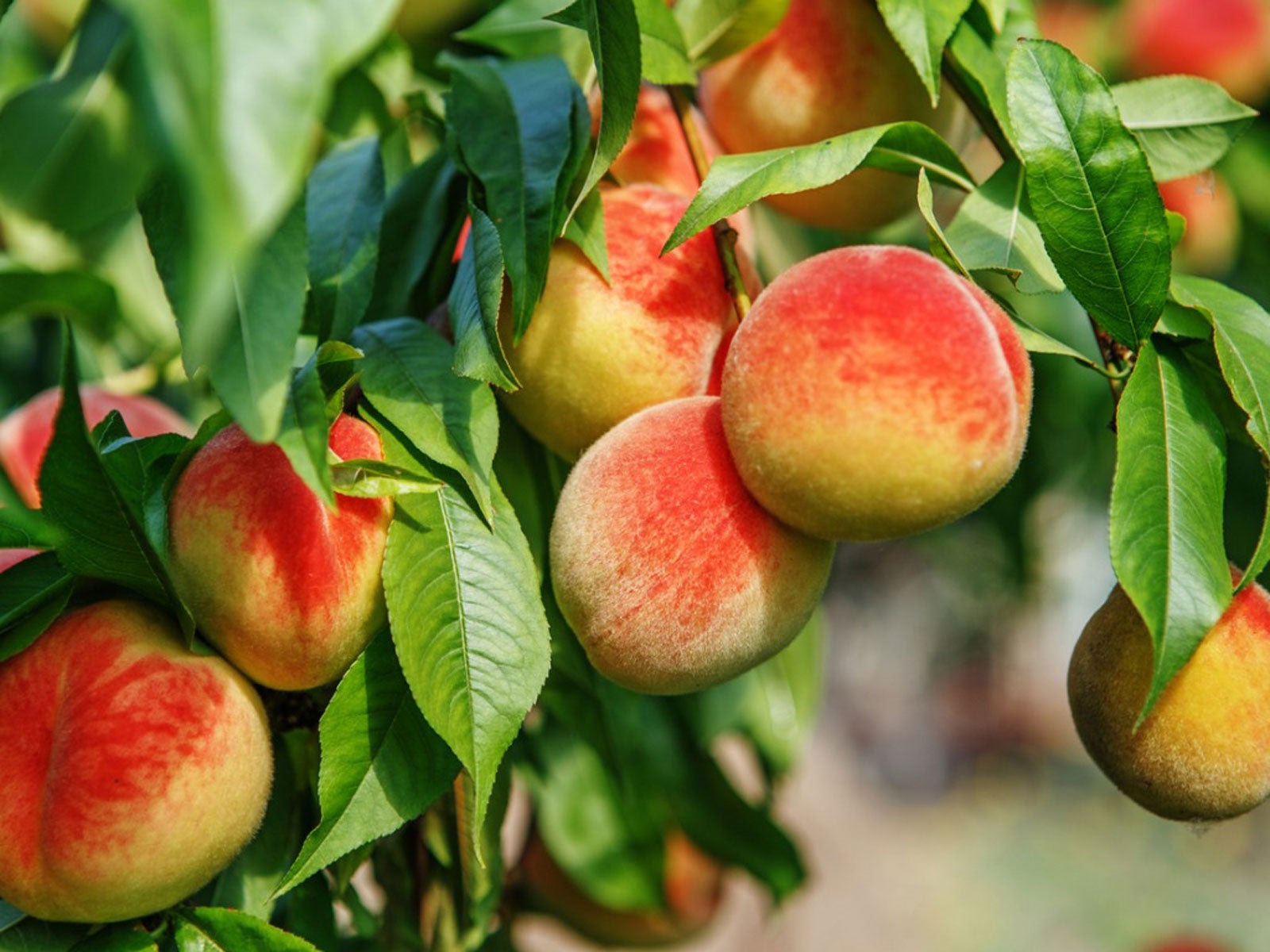Peach Tree Care: How To Grow Peaches
Caroline Bloomfield

A peach is often defined as something attractive, exemplary, and delightful. There’s a good reason for this. Peaches (Prunus persica), native to Asia, are juicy, delicious, and uniquely tasty. However, peach tree care requires a commitment to learning how to grow peaches. Peach trees need a regular routine of feeding, pruning, and management of pests and disease.
How to Grow Peaches
Although growing peach trees can’t be taken lightly, it can be highly rewarding. Peaches provide Vitamins A and C as well as potassium and fiber. Fresh, frozen, dried, or canned peaches are one of nature’s true delights.
You need to first decide whether you want freestones (best for eating fresh) or clingstones (work well for canning). Peaches are self-fruitful, meaning that for pollination purposes you don’t need to plant more than one. It’s a good idea to consult with your local university extension service about the best peach trees for your climate.
There are literally hundreds of varieties, some being cold hardy to -10 degrees F. (-23 C.) and a few that are cold hardy to -20 degrees F. (-29 C.). Select a site for your tree that will get full sun and won’t be shaded by other trees or buildings. Knowing that some peach trees can grow up to 20 feet (6 m.) wide and 15 feet (5 m.) tall, choosing the best site for your tree is the first step.
Most experts recommend planting peach trees in an area that’s a bit elevated, if possible, to ensure good air circulation. Your peach tree’s soil should be well-drained and loamy. It will need to drain quickly during heavy rains.
You may need to do some serious soil amending by digging in a lot of organic matter in advance. Peach trees cannot survive in waterlogged soil, so up to two feet (0.5 m.) of sandy, loamy, fertile topsoil works best, even if the subsoil contains a bit more clay. The best soil for peach trees is ideally in the 6.5 to 7.0 pH range.
How to Plant a Peach Tree
A dormant, bare-root peach tree should be planted in late winter. A container grown tree should go into the ground in spring. For bare root trees, soak the roots for six to twelve hours before planting.
Sign up for the Gardening Know How newsletter today and receive a free copy of our e-book "How to Grow Delicious Tomatoes".
Dig your planting hole a few inches (7.5 cm.) deeper than and twice as wide as the tree’s root ball or root system. If your tree is grafted, make sure the bud union is planted a couple inches (5 cm.) above the soil. If your tree is bare root, leave plenty of room for the roots to spread. Fill the hole half way with soil and water it well.
When it drains, check to see if the tree is still positioned correctly, then fill the rest of the hole with soil. Water again and mulch around the trunk. It’s a good idea to construct a 3- to 6-inch (7.5-15 cm.) berm of soil around the tree’s root zone to help contain water and mulch.
After planting, trim the tree back to 26 to 30 inches (66 to 76 cm.), removing its side branches. This will help your tree produce a better crop.
Care for Growing Peach Trees
Fertilize your peach tree in spring using one pound (0.5 kg.) of 10-10-10 fertilizer for new trees and an additional pound (0.5 kg.) each year until your tree is 10 feet (3 m.) high. Plan to prune your peach tree each year in spring, making sure the center of the tree has a free flow of air and sunlight.
Pay close attention to your peach tree throughout the year to address any problems that may arise like peach leaf curl and browning, or diseases and pests. It takes some attentiveness and a bit of focus but growing a peach tree can be a gratifying and enjoyable project.
- Caroline BloomfieldManager of Marketing Communications